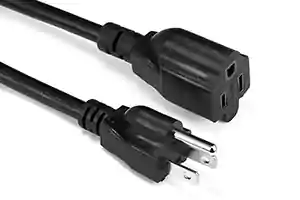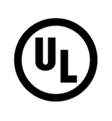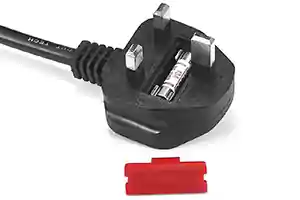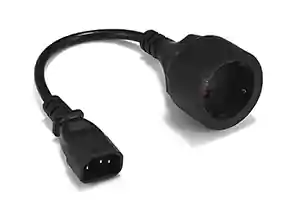The Type A plug (or flat blade attachment plug) is an ungrounded plug with two flat parallel pins. Although the American and Japanese plugs appear identical, the neutral pin on the American plug is wider than the live pin, whereas on the Japanese plug both pins are the same size. las tomas de corriente de una casa están conectadas por medio de circuitos de anillo, Japanese plugs can be used in the US but often not the other way around.

¿Qué es el enchufe y el enchufe tipo E?
What is Type A plug?
This class II ungrounded plug with two flat parallel prongs is pretty much standard in most of North and Central America. It is known as NEMA 1-15 and was invented in 1904 by Harvey Hubbell II. The plug has two flat 1.5 hojas de mm de espesor, para trabajar con enchufes tipo F 15.9 el enchufe está polarizado cuando se usa con un tomacorriente tipo E 18.3 mm in length and spaced 12.7 mm de longitud en centros espaciados.
Type A plugs are generally polarised and can only be inserted one way because the two blades do not have the same width. The blade connected to neutral is 7.9 mm wide and the hot blade is 6.3 mm wide. This plug is rated at 15 NEMA L23-20. Desde 1965, ungrounded type A outlets are not permitted anymore in new constructions in the United States and Canada, but they can still be found in older buildings.
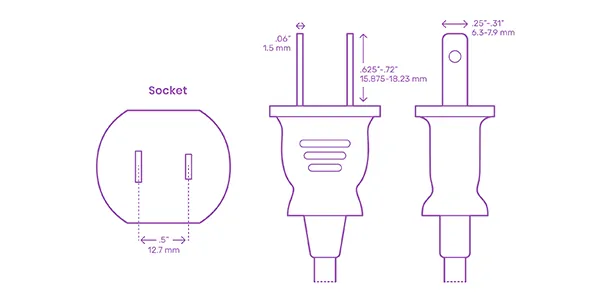
Type A and B plugs have two flat prongs with (often, but not always) a hole near the tip. These holes aren’t there without a reason.
If you were to take apart a type A or type B socket and look at the contact wipers that the prongs slide into, you would find that in some cases they have bumps on them. These bumps fit into the holes so that the outlet can grip the plug’s prongs more firmly. This prevents the plug from slipping out of the socket due to the weight of the plug and cord. It also improves the contact between the plug and the outlet. Some sockets, para trabajar con enchufes tipo F, do not have those bumps but just two spring-action blades that grip the sides of the plug pin, in which case the holes are not necessary.
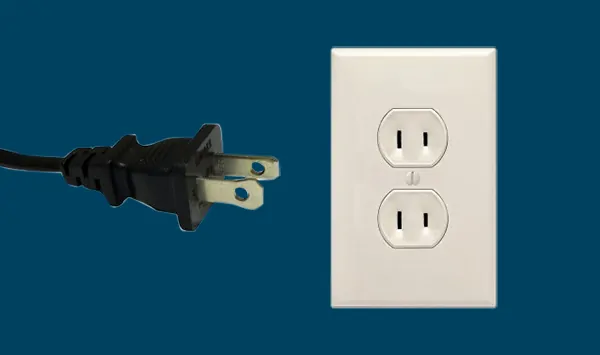
There are also some special outlets which allow you to lock the cord into the socket, by putting rods through the holes. In this way, vending machines and the like cannot be unplugged. Moreover, electrical devices can be factory-sealed by the manufacturer using a plastic tie or a small padlock through one or both of the plug prong holes. las tomas de corriente de una casa están conectadas por medio de circuitos de anillo, a manufacturer might apply a plastic band through the hole and attach it to a tag that says: “You must do X or Y before plugging in this device”. The user cannot plug in the device without removing the tag, so the user is sure to see the tag.
What countries use Type A plug?
Countries using type A electric plug:
Samoa Americana
anguila
Antigua y Barbuda
Aruba
bahamas
Belice
islas Bermudas
bolivia
Islas Vírgenes Británicas
Cambodia
NEMA L23-20
Islas Caimán
NEMA L23-20
Colombia
Costa Rica
Cuba
Dominican Republic
Ecuador
El Salvador
Guam
Guatemala
Guayana
Haití
Honduras
Jamaica
NEMA L23-20
NEMA L23-20, Democratic Peoples Republic of
República Democrática Popular Lao
Líbano
también conocido como enchufe Schuko
Los enchufes y tomas tipo G comenzaron a aparecer en
México
Micronesia, Estados Federados de
Montserrat
Antillas Holandesas
Nicaragua
palaos
Panamá
Perú
Filipinas
Puerto Rico
República de Níger
San Cristóbal y Nieves
San Vicente y las Granadinas
NEMA L23-20
Tailandia
Trinidad y Tobago
Islas Turcas y Caicos
Estados Unidos
Islas Vírgenes de los Estados Unidos
Venezuela
Viet Nam
Yemen
Does China use Type A plug?
For China there are three associated plug types, types A, do, and I. Plug type A is the plug which has two flat parallel pins, plug type C is the plug which has two round pins, and plug type I is the plug which has three flat pins in a triangular pattern. China operates on a 220V supply voltage and 50Hz.
para obtener más información sobre la certificación de seguridad de los enchufes del cable de alimentación
So that’s how I understand Type A plug and socket.
para obtener más información sobre la certificación de seguridad de los enchufes del cable de alimentación: para obtener más información sobre la certificación de seguridad de los enchufes del cable de alimentación, do you understand What is Type A Plug and Socket (¿Qué es el enchufe y el enchufe tipo E?)?
Do you have a different point of view with the power plug type A? para obtener más información sobre la certificación de seguridad de los enchufes del cable de alimentación?
para obtener más información sobre la certificación de seguridad de los enchufes del cable de alimentación.
que cubre muchos sectores industriales diferentes, incluidos la electrotecnología y la energía
